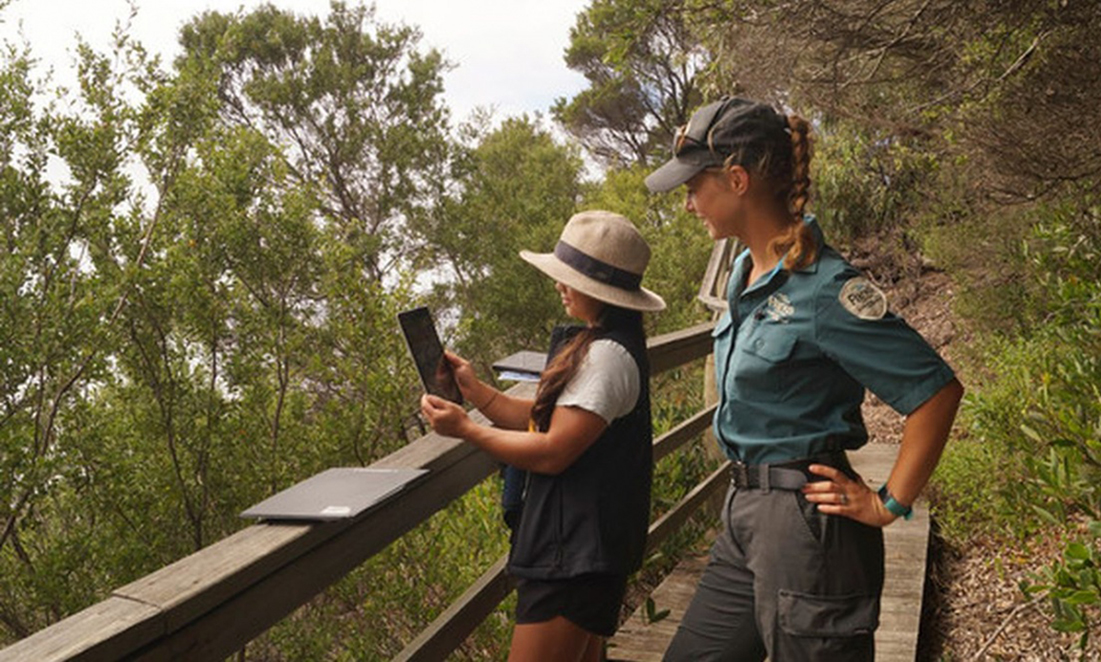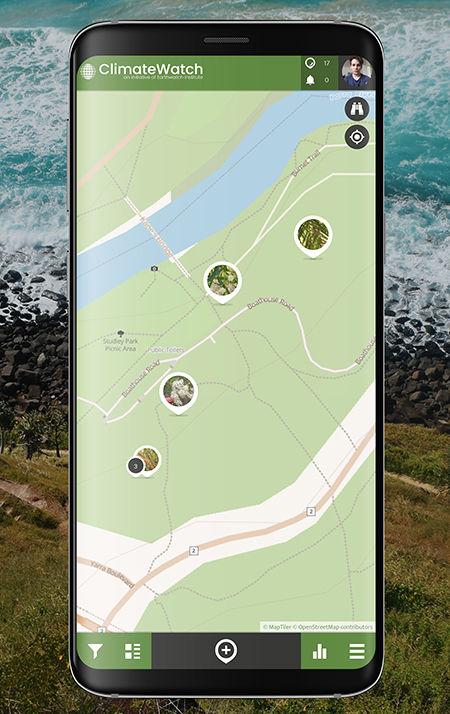A Carnaby’s black cockatoo peers at you from a flowering tree. Across Perth suburbs, you’ll find these birds snacking on banksias each autumn.
Ruffling its glossy, white-banded feathers, its plumage contrasts with the banksia’s golden flowers. Keeping a watchful eye on you, it munches on banksia seeds.
Hang on, you wonder, isn’t it a bit early in the year for a Carnaby’s to have arrived?
Get snappy for science
Phone in hand, you flick past social media notifications and emails. You open the ClimateWatch app.
You take the quick snap and toggle through a list of options until you find the right species. The app walks you through identifying it.
Within minutes, a team of scientists have received your pic. They’ll include it in a decade-long study on the impact of climate change on different species.
Congratulations, you’re a citizen scientist!

I like big data and I cannot lie
ClimateWatch was developed by Earthwatch Australia with the Bureau of Meteorology and The University of Melbourne. It’s the first continental phenology project in the southern hemisphere.
Phenology is the study of nature’s calendar. It charts what times of year birds nest, flowers bloom and insects breed.
Changes in temperate and rainfall are affecting these seasonal cycles.
For example, drier summers have led to more forest fires, destroying the Carnaby’s nesting trees in Myalup State Forest.

Using ClimateWatch, you can identify plants and animals in your backyard or on nature trails.
Program Coordinator Luke Richards says tracking changes in behaviour over time is key.
“Through these trails, we can get repeat observations on the same species in the same location,” Luke says.
Biologists check the pictures to ensure users have identified the correct species. The data is added to the Atlas of Living Australia for land management and scientific study.
A climate crisis
The good news is that ClimateWatch is still going strong after 12 years.
“We’re at that point where we’ve got data length to start having true impacts in research, policy making and land management,” Luke says.
Luke says anyone can help make a difference by using ClimateWatch.
The bad news is that the latest Intergovernmental Panel on Climate Change report predicts our planet could be 10 years away from heating up by more than 1.5°C. This would cause more bushfires, droughts, floods and cyclones.

“Get out there, enjoy the wildlife that's around you and start collecting this data,” he says. “With it, we can respond to the changes happening in the biological world.”









